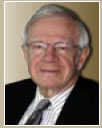
Vol. 16 No. 1 |
Summer 2006 |

 Those
of us who have survived our children’s teenage years know we are deserving
of a medal, perhaps not a medal of honor so much as one for tenacity. Thankfully,
one teenager we haven’t had to worry much about is the magazine of
the University of Utah, now 15 years old. Certainly Continuum has
brought about some worried days and nights for its many devoted contributors,
just as an adolescent pushing his curfew to the nanosecond may have kept
mom and dad agonizing in the wee hours. Still, a decade and a half after
its founding, Continuum has evolved to become more than simply a magazine—it
has become the voice of the University, which has required tenacity and
conviction on the part of many loyal and creative folks.
Those
of us who have survived our children’s teenage years know we are deserving
of a medal, perhaps not a medal of honor so much as one for tenacity. Thankfully,
one teenager we haven’t had to worry much about is the magazine of
the University of Utah, now 15 years old. Certainly Continuum has
brought about some worried days and nights for its many devoted contributors,
just as an adolescent pushing his curfew to the nanosecond may have kept
mom and dad agonizing in the wee hours. Still, a decade and a half after
its founding, Continuum has evolved to become more than simply a magazine—it
has become the voice of the University, which has required tenacity and
conviction on the part of many loyal and creative folks.
Back in 1989, the Alumni Association’s executive director John Ashton BS’66 JD’69 and I began talking about putting together a quarterly magazine detailing the comings and goings of alumni and the activities of the Alumni Association. It would also report on the achievements of our superb faculty and students, and the many significant contributions to the community of our great University. After two years of planning, the first issue of Continuum magazine was finally in the mail.
Early on, we drafted a mission statement that charged the publication with “communicating the traditions, heritage and evolving excellence that are the essence of Utah’s flagship institution of higher education… with clarity and insight to stimulate thought and formulate opinion… to convey the history of the University and to enhance pride in the institution.”
Pretty lofty goals, right? This requires the magazine to uphold the highest standards in journalistic ethics, which means it must accurately report the situation “on the ground.” In “stimulating thought and formulating opinion,” while also enhancing “pride in the institution,” Continuum and its contributors must position themselves as the “insider outsider”—that is, remain part of the institution, privy to its highest highs and lowest lows, but also capable of analyzing its people, research, history, and events through the prism of the unbiased journalist. It is a tough line to walk, but absolutely necessary in order to tell faithfully the stories that appear between the front and back covers.
I believe Continuum has done an admirable job of balancing the goals of the institution while remaining committed to skillful, accurate reporting, generating dialogue when necessary. For example, the magazine fairly and honestly told the story of the U’s controversial accommodations policy in the Fall 2005 issue, but it did so in the spirit of prompting discussion, offering its pages as a laboratory to dissect and analyze the policy. In this way, Continuum is the successful embodiment of free expression, which is what the University is all about.
When By Simms BS’57, the magazine’s first editor, retired in 1997, I had the opportunity to salute him in the “Up Front” page of the magazine with a quote by the early 19th century writer William Hazlitt, who said that “words are the only thing that last forever.” For someone like me—who has spent much of his career in broadcast news, where pictures and sound dominate—words often play second fiddle. However, I agree with Hazlitt and with Plutarch who said, “For an aching mind, words are physician.”
Currently, there are approximately 163,000 living U of U alumni. And for many, their primary—and sometimes only—connection with the U is through Continuum. It becomes far too easy to lose one’s connection with an alma mater under the crush of accumulated years. The arrival of Continuum every few months is a gentle reminder to reflect on the past, somewhat like tying a string around the index finger to prompt a memory. That said, the magazine, which also crosses the desks of staff, faculty, legislators, and community members and leaders, is more than a vehicle for nostalgia. Rather, university magazines publish stories not just because they are interesting (as they most definitely are), but because they tell of those who are struggling to cure and create, to understand and inspire. Most assuredly, it is good for the University to publicize its accomplishments, but it is also good for the community to know how the U is helping reshape the world. And Continuum, with its emphasis on honest and direct storytelling, is the best medium to communicate the University’s efforts to improve the human condition.
Nothing is as important in our short time on Earth as education. To impart
or acquire knowledge, to develop the power of reasoning and judgment,
and to generally prepare oneself or others intellectually for a mature
life—those are the things that truly matter. Without question, the
University of Utah—our beloved alma mater—has fulfilled those
life-enriching “musts” since its founding in 1850. And like
the tens of thousands who devote time, energy, and resources to the continued
excellence of the University of Utah, Continuum will, I’m
certain, move resolutely beyond its teen years into full-blown maturity,
serving as a major contributor to this cause.
Happy birthday, Continuum. Keep up the good work.
—Ted R. Capener BS’53 is former vice president for university
relations and publisher of Continuum.